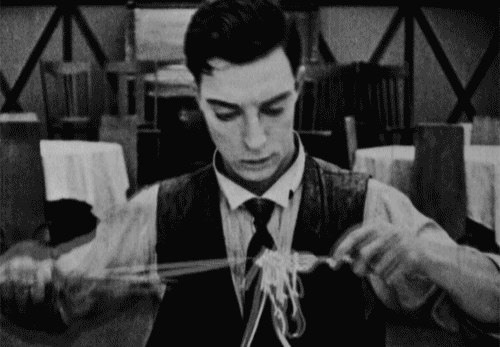
Yes, you’ve guessed it – it’s Blowing in the Wind (but that’s for later!), but there is more than one answer, my fellow Trillers:
Answer: it’s in the regular homework.
By practising a little each day (rather than a long review the night before we meet), it will help build up the memory muscle and the notes (once learned) and nuances (marked with your pencil on your music scores) will become embedded in your brain and you will sing and perform naturally.

Answer: it’s always watching Eamonn.
Getting that professional sound, it is important we are all singing the same rhythms and start and end at the same time.
This can only be done by watching Eamonn, especially for the cut off points (and the famous Eamonn dunce holes) and dramatic endings.
If you see Eamonn give a Big Nod it means SHUT UP!
The hard work we have been doing at rehearsal and at home is paying off.
Going through Slow Train (with Jan now promoted from Station Announcer to Station Mistress) and The Impossible Dream, we now know our respective tunes and can now concentrate on annunciating the words, leaning into the diction and telling the story.
Altos be brave and sing out as if you are fighting for a cause in The Impossible Dream
Now we have arrived at Blowing in the Wind – a song previously sung at our concert in 2019.
Eamonn has changed his arrangement slightly for 2023, by adding a bass line and changing the Tenor line.
Although this song was written over 60 years ago, the words are true today as the day it was written.
Blowin' in the Wind is a song written by Bob Dylan in 1962. It was released as a single and included on his album The Freewheelin' Bob Dylan in 1963. It has been described as a protest song and poses a series of rhetorical questions about peace, war, and freedom. The refrain "The answer, my friend, is blowin' in the wind" has been described as "impenetrably ambiguous: either the answer is so obvious it is right in your face, or the answer is as intangible as the wind".
Dylan originally wrote and performed a two-verse version of the song; its first public performance, at Gerde's Folk City on April 16, 1962, was recorded and circulated among Dylan collectors. Shortly after this performance, he added the middle verse to the song. Some published versions of the lyrics reverse the order of the second and third verses, apparently because Dylan simply appended the middle verse to his original manuscript, rather than writing out a new copy with the verses in proper order.
The theme may have been taken from a passage in Woody Guthrie's autobiography, Bound for Glory, in which Guthrie compared his political sensibility to newspapers blowing in the winds of New York City streets and alleys. Dylan was certainly familiar with Guthrie's work; his reading of it had been a major turning point in his intellectual and political development.

Dylan's comments:
“There ain't too much I can say about this song except that the answer is blowing in the wind. It ain't in no book or movie or TV show or discussion group. Man, it's in the wind – and it's blowing in the wind. Too many of these hip people are telling me where the answer is but oh, I won't believe that. I still say it's in the wind and just like a restless piece of paper it's got to come down some ...
But the only trouble is that no one picks up the answer when it comes down so not too many people get to see and know ... and then it flies away.
I still say that some of the biggest criminals are those that turn their heads away when they see wrong and know it's wrong.
I'm only 21 years old and I know that there's been too many wars ... You people over 21, you're older and smarter”.
Blowing in the Wind contains ‘scotch snaps’ which are syncopated musical rhythms in which short, accented notes are followed by longer ones. This reverses the pattern normally associated with dotted notes or notes inégales, in which the longer value precedes the shorter.
It certainly gives it an interesting sound rather than just a regular rhythm which would be boring.
Lean through ‘friend’ when singing “the answer my friend is blowing in the wind” and DO NOT take a breath!

Sopranos and Basses, of course, are on the tune. However, making the distinction in the verses and emphasising certain phrases are important. Do not be complacent.
The Tenors are the trumpet section and with the Altos have triadic lines that go up and down around the linear lines of the Sopranos and Basses as the song builds from the quiet gentle Soprano start to a glorious harmonious middle and end until the very last three notes where the Sopranos finish quietly “in the wind”
The concert on 12 July is going to themed around songs from the 60s.
Will we be concert ready?
The answer, my friend, is in your hands (or voices).


This week we went back in time on a Slow Train with a Smile lost in the Windmills of your Mind.
Smile. A reminder that the Altos start on the same note as the Sopranos
The Tenors have just a whisper of the tune, but are mainly harmonising
Of course, it is quite easy for 1st Sopranos and the bass voices as we have the tune throughout.
However, don’t be complacent as it’s important to give shape to the phrases and emphasise the soft and loud.
There is only one verse, after all, and that is repeated three times, so we must make it sound interesting and different each time.
Everyone sings Ooohs and these should be sung like Mantovani’s string orchestra; a lush, romantic, syrupy sound.
Think of owls hooting. Do not sing it like a wind going through a haunted wood!
From being owl-like sing strongly into the words of the last verse ‘Light up your face with gladness..”
And remember, “What’s the use of crying” is quiet and tender.
Eamonn’s conclusion – A cracking start!
Seated and alert we sang through The Windmills of Your Mind.
This was good in places.
It is important to sing through the consonants – Rounnnnnnnnnn…, reelllllllll, Minnnnnn, shonnnnnn etc. This takes a lot of effort to make it sound as loud as possible.
Think of the warm ups we do. They are not just fun ways to warm our vocal chords, but also helps us with these difficult techniques. It will come with practice and it really adds to the feeing and atmosphere of the song.
Another tip we were given was to put a ‘z’ on the end of ‘eyes’. As usual, watch Eamonn for the cut off and by singing a ‘z’ it is a crisp sound and not a deflating tyre hiss!
Sopranos, no slowing down at the end!
Now we know our parts we need to tell the story and when Eamonn has hands to conduct, he will be able to guide us through the overlapping sections and the stops.
It will sound gorgeous!
All our homework is paying off, so we were able to move on to a rendition of Make You Feel My Love. We haven’t done this for a couple of weeks and Eamonn said it was lovely and he was really moved by our performance.
Pleasing Eamonn always gives a good feeling!
Stepping back in time with a new song, Slow Train written by British duo Flanders and Swann in July 1963. It laments the closure of railway stations and lines brought about by the Beeching cuts in the 1960s, and also the passing of a way of life.
It takes the form of an elegiac list song of railway stations, which has been likened to a litany. Its evocation of quiet, rural stations is highly romanticised and uses imagery such as the presence of a station cat or milk churns on a platform to express a "less hurried way of life" that is about to vanish.
Although most of the stations mentioned in Flanders's song were earmarked for closure under the Beeching cuts, a number of the stations were ultimately spared closure: Chester-le-Street, Formby, Ambergate, and Arram all remain open, and Gorton and Openshaw also survives, now called Gorton. Some stations referred to in the song have since been re-opened, notably Chorlton-cum-Hardy. It had closed in January 1967, but re-opened in July 2011 as Chorlton tram stop.
Selby and Goole were not threatened by Beeching, though the line ("from Selby to Goole") mentioned in the song was closed to passengers. The other line mentioned, "from St Erth to St Ives" in Cornwall stayed open.
Michael Flanders' song treats Formby Four Crosses and Armley Moor Arram as station names, but in both cases, he combined two consecutive names from an alphabetical list of stations. Leon Berger, archivist of the estate of Donald Swann, said that Flanders had taken his list from one published in The Guardian, which was the source of some of the discrepancies between the names in the songs and the historic names of the stations.
Slow Train is very wistful, nostalgic and extremely English, like a cream tea and Noel Coward.
Eamonn told us we should all sound a little more like Noel Coward.
The piano part is the train on the tracks and the words are journey that keep moving on slowly.
We all sing the same notes until the middle section, so we can all tell the story and enunciate the words and over pronounce them which goes with the era and ethos of the song.
Jan, our lovely Finance Director, has a new position as Station Announcer!
Definitely homework on the middle section.
We can all be proud of a good night’s performance. Keep up the good work!

And remember play the comedy of the piece and don’t be timid!

Eamonn was back this week and with a smile on his face when saw how many of us were there in person, especially the large Tenor section!
Then came the test! He wanted to hear how well we had worked last week with Ricardo and started with Daydream Believer where the Tenors have their moment of glory.
We did sing it through to the end and was told it was very good apart from the middle verse on page 3. The Doos need to be sung with a Smile, so they sound bright. 1st Sopranos must be bold and sing out – there are only three different notes, so be brave!
The Altos have Eamonn’s favourite bit (no pressure to get it right 😉) with the Ba da das on page 6
Don’t slow down too much at the end. Keep you eye on Eamonn and follow his tempo.
The Impossible Dream (The Tenors moment in the spotlight again!) was next.
Each of the phrases should be expanded and not sound short and staccato.
Watch out for the timings of endings and put the consonants on the end of the words, like the ‘D’ on ‘and’. It makes it sound more sincere.
Tenors mark your music score when you are NOT singing the tune! Just because you shine at the start with the tune, you must do your part and harmonise when it is written. It is the harmonies that make the songs gorgeous and will make our audience smile!
Smile, a new song for this week. It is a song based on the theme song used in the soundtrack for Charlie Chaplin's 1936 film Modern Times.
Chaplin, who composed the song, was inspired by Puccini's Tosca. John Turner and Geoffrey Parsons added the lyrics and title in 1954. In the lyrics, based on lines and themes from the film, the singer is telling the listener to cheer up and that there is always a bright tomorrow, just as long as they smile.
Smile has become a popular standard since its original use in Chaplin's film and has been recorded by numerous artists, including Nat King Cole, Tony Bennett, Sammy Davies Jr, Michael Jackson, Judy Garland etc.
Nat King Cole recorded the first version with lyrics. It charted in 1954, reaching number 10 on the Billboard charts and number 2 on the UK Singles Chart. This version was also used at the beginning of the 1975 movie Smile.

As we have such a large Tenor section, it was decided that three of the Tenors should join the Lady Tenors and the rest of the tenors sing Bass. That brought a smile to everyone’s faces.
This was a popular decision for the Basses as they, along with the 1st sopranos, get to sing – you’ve guessed it! – The Tune!
The remaining Tenors (including the Lady Tenors), Altos and 2nd Sopranos sing the harmonies.
The Altos get the jazzy, shoulder action, notes.
Once all the notes are learned for the first verse, they are repeated throughout until the end when it is slightly different. Even the Oohs are the same notes and should be sung with a smile giving a lush feeling.
Then comes the techniques for giving the phrases shape and meaning.
And don’t forget to do what the last word in the song says and SMILE!
We then revisited The Windmills of Your Mind, which we haven’t sung for a little while.
After singing it through, the comment was, “We got to the end!”
Lady Tenors entrance is a lower note than expected.
The phrases are long and expansive, so take a deep breath and don’t breathe in the middle of these phrases.

That will NOT make Eamonn smile!
Who me Eamonn?
It is helpful to mark this on your music score; that way it doesn’t come as a great surprise and you’re not taking a breath where you shouldn’t.
Crescendo on ‘silently’ and come in loud at the beginning of ‘space’ and pull back straight away so it ends quietly. ‘Space’ is a long note, so make the ‘a’ part long and ‘s’ sound short. (No hissssing)
Remember to listen to the tracks in Dropbox. Check your voice part and then try singing against the full voice part to see how it all fits together.
Do your homework and you will gain confidence and your voice will be heard.
Keep smiling!


